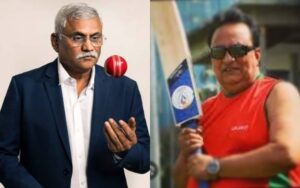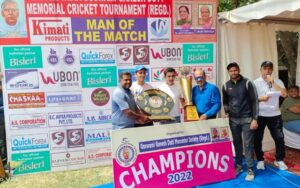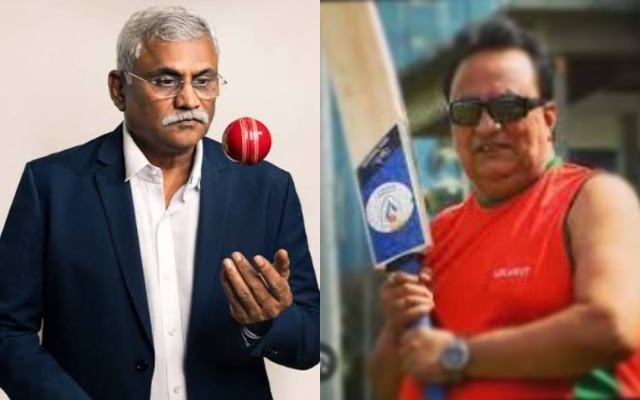
If runs through fours and sixes were supposed to be an advertisement for the Indian Premier League (IPL), then what happened in Hyderabad on Wednesday night was mayhem. An aggregate of 523 runs scored, with 38 sixes, was a delight for fans as Sunrisers Hyderabad defeated Mumbai Indians by 31 runs in a heart-stopping game. Enough has been written about this match in the last 24-hour cycle, with some calling it a nightmare and others regarding it as a great contest. For those who say this was a bowlers’ nightmare, it’s nothing new. But then, men like Pat Cummins and Jayadev Unadkat showed they could still go for runs, and take wickets to halt MI.
This piece is not about the IPL though.It’s about how slam-bang, whiz-thud cricket has been a part of Delhi’s history for decades. Yes, some say Kapil Dev winning the Prudential World Cup in 1983 was the important date, and innovations began after that.
That, though, is not 100 per cent correct, since local cricket in Delhi has always been about huge scores and bowlers suffering. Yes, when hot-weather cricket was played in Delhi in the 1980s, it was the red ball in use and white clothes in vogue. Very different from the coloured gearof today, or from when Kerry Packer’s World Series Cricket was first described as “pyjama cricket”.
That “pyjama cricket” has become the in-thing is well known, for the coloured clothing and the timing of contests, with matches ending well past bedtime, have redefined cricket in many ways. Delhi cricket in summer was all about madness, or so one thought. Toplay in 43 degrees Celsius heat and still not worry about getting dehydrated or suffering a sun stroke required all those who played cricket to be a little crazy.
How many in this generation would know that Kapil, Madan Lal, Manoj Prabhakar, Kirti Azad, Sunil Valson and Surinder Khanna, to name a few, had been through this type of cricket as well? Kapil was not from Delhi, and he represented Haryana in Ranji Trophy. Yet, when a certain club called Malviya from South Delhi showed up at tournaments, armed with “borrowed” cricketers, other clubs feared them.
Those days, in the mid-1980s, prize money was paltry. “Kapil turned up once for Malviya and scored 40-odd runs in four overs,” recalled Khanna, the star of the 1984 Asia Cup triumph. “That was his impact. Later, Kapil Paaji told me, it’s better to play in Delhi rather than go and play club cricket in England. Standards are good.”
Latest IPL news:
That three IPL franchises, including one that has never won the trophy, enjoy significantly more popularity is down to the fact that they recognised that team sport is also driven by individual icons.#RohitSharma #MSDhoni #ViratKohli https://t.co/qPj5W18TXV
— RevSportz (@RevSportz) March 28, 2024
As a wicket-keeper-batter, Suri, as friends call him, possessed a sharp cricketing brain. He was a fearless cricketer whose Ranji performances were also top class.
Speaking about cricket then and now, Khanna mentioned how many more events are there. “We have tournaments inthehundreds now in Delhi and the NCR (National Capital Region),” he said. “I mean, Gurgaon (Gurugram) has now over 40-odd grounds with floodlights, so that’s where cricket is now. Delhi is not just Delhi, boss, its adjoining places as well.”
For old-timers like this writer who were lucky to see Kirti Azad, a member of the 1983 World Cup squad, smash sixes at a small ground near Nehru Place in South Delhi, it was a delight. Kirti was the master of thumping sixes, something which even thelate Raman Lamba did with aplomb in club cricket and the Ranji Trophy. They were fearless batsmen who made life miserable for bowlers.
So, all those who think the IPL was responsible for cricket becoming more pacy might be wrong. Some of the names who played cricket in summer in Delhi read like a who’s who of cricketers from that era. Valson, also a member of the 1983 World Cup squad and a guy who was part of the Delhi franchise in the IPL, spoke of how hot-weather cricket in Delhi was still going strong.
“To play matches was the biggest thing, none of us played for money in those events,” said Valson. “I mean, when I was a youngster and lived in Faridabad, to come to Delhi and play cricket tournaments even small in nature, was a big deal.”
Kirti, Volley – as Valsonwas called – and Khanna were all from Delhi University, where inter-college rivalries were high voltage.
Sadly, college cricket is not the same now, though Delhi cricket has grown, just like the city. The names of certain tournaments, like Goswami Ganesh Dutt, Lala Raghubir and DDCA hot weather league will ring a bell for old-timers. Some names kept appearing in old scoresheets, like Kamal Talwar and Durga Prasad. These guys had no qualms playing for different clubs,as long as they got some match fee on a daily basis.
Talwar was ruthless, called Bhoot[Ghost] as he instilled fear in bowlers. He was the master of boundaries. Those days, we did not know what strike-rate was, but the flow of runs matched the Yamuna River in spate during the monsoon. “We cricketers never played for money in these leagues, once we had done well as first-class cricketers and had played for India,” mentioned both Valson and Khanna.

What have beenthe big changes since the ’80s. Well, the cricket then was usually a 40-overs-a-side contest, which was then reduced to 35. Slowly, the shift has been towards the T20 format, whichcaught on like wildfire in the 2000s. Today, in the NCR, there are hundreds of tournaments, played during the day or as day/night contests. Cricket has become non-stop. Other than the monsoon period, Delhi club cricket is lively.
If you think all this is controlled by the DDCA (Delhi and Districts Cricket Association), you are wrong. Private cricket academies and clubs have mushroomed all over. Some team names are fancy, like Chilla Tigers and Trilokpuri Kings. Each team has its own logo, and coloured clothing with player name and number on the back of the T-shirt.
“In our time, during the summer heat, we played the first innings from 7am,” recalled Valson. “To go through 40 overs was tiring. The second innings would begin after a three or four-hour gap as we did not want players to die of sunstroke.”
Today, there is no such fear. The T20 format has become all-weather. Players wear sunscreen like warpaint, whether needed or not. They sport dark goggles, and floppy hats have made way for bold and striking caps.
If Virender Sehwag was the role model many years ago, today it is Virat Kohli, once a West Delhi boy, who is now the superstar of global cricket.
“We want to become batters, smash the ball to pulp like Virat bhai,” said Sanjay Kumar, a player in his mid-20s. “We don’t want to be bowlers like Ashish Nehra or Ishant Sharma.” He plays T20 cricket almost five days a week. Ask him about fatigue, and he laughs. “Cricket nashaahai [cricket is like a drug], Sir,” said the youngster, who once dreamt of playing for Delhi.
Many had that dream. Now, not all of them do. In their own local clubs, they are happy to be like Sehwag of the bygone era or King Kohli of today. They watch IPL at night and play “pyjama cricket” in the day. Maybe, after watching the Sunrisers Hyderabad versus Mumbai Indians big bash in the IPL, local cricket will get even more bold in Delhi’s nooks and corners. Some venues are on the Yamuna riverbed.The water may have dried up, but not the fours and sixes. There will be more carnage!
For more sports content: https://revsportz.in/




